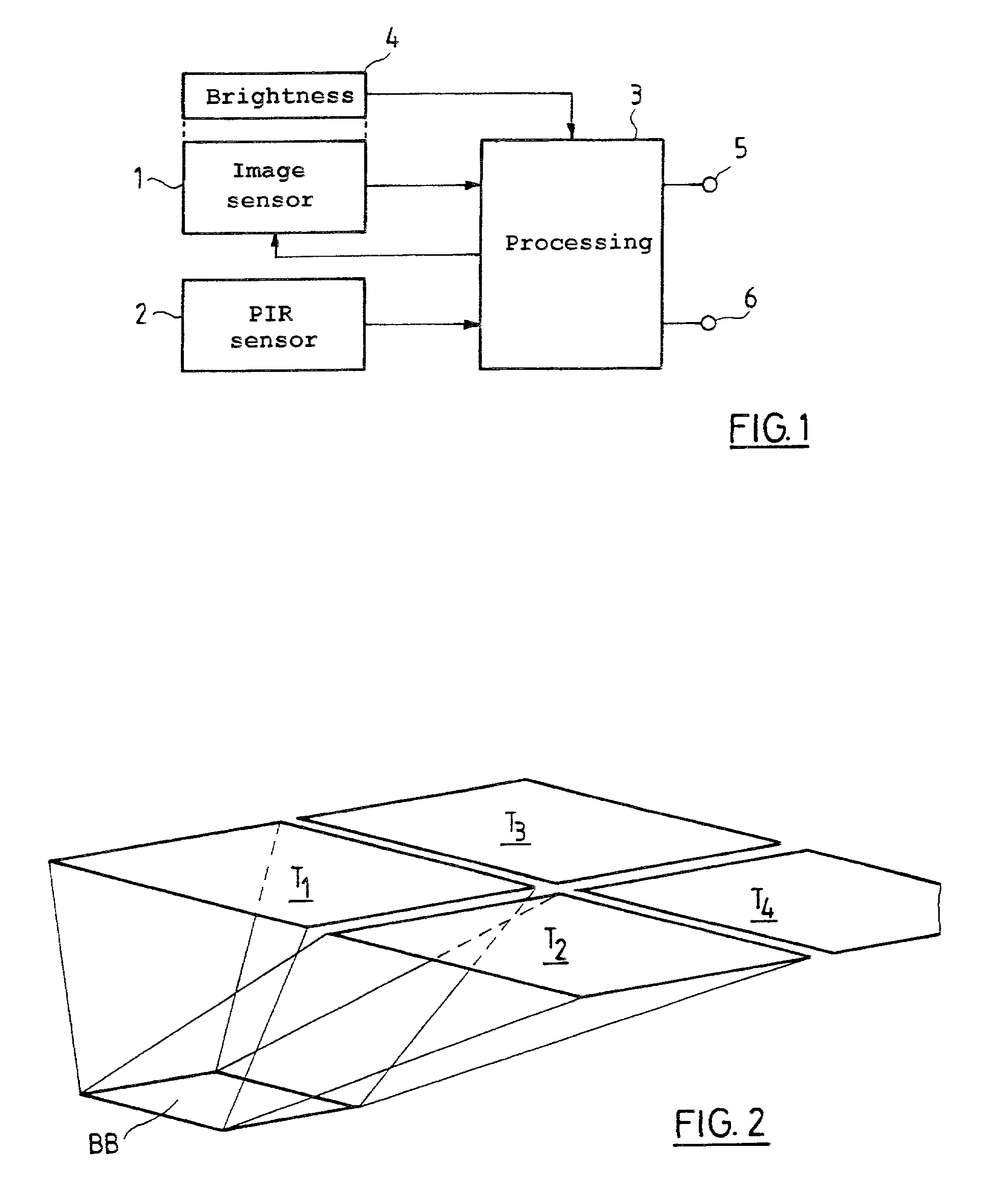Presence detector and its application
- Summary
- Abstract
- Description
- Claims
- Application Information
AI Technical Summary
Benefits of technology
Problems solved by technology
Method used
Image
Examples
Embodiment Construction
[0025] The presence detector illustrated in FIG. 1 substantially consists of an image sensor 1 operating in the visible spectral range, a passive infrared sensor 2 and, connected to these, an electronic evaluator 3 for controlling the sensors and for processing and evaluating the sensor signals. The image sensor 1 is equipped with a brightness sensor 4 such as a photo-diode for measuring the ambient brightness, which is likewise connected to the electronic evaluator 3. Alternatively, the image sensor 1 can be designed to measure the ambient brightness, whereby it measures a value for the brightness of the pixels in its visual range by means of the known integration time. This value can be the average value or a histogram or the maximum value of the brightness of the pixels, for example.
[0026] The presence detector is intended to determine the presence of persons in a room and, based on the result of this monitoring, to control the lighting of the room, as well as its heating / ventila...
PUM
 Login to View More
Login to View More Abstract
Description
Claims
Application Information
 Login to View More
Login to View More - R&D
- Intellectual Property
- Life Sciences
- Materials
- Tech Scout
- Unparalleled Data Quality
- Higher Quality Content
- 60% Fewer Hallucinations
Browse by: Latest US Patents, China's latest patents, Technical Efficacy Thesaurus, Application Domain, Technology Topic, Popular Technical Reports.
© 2025 PatSnap. All rights reserved.Legal|Privacy policy|Modern Slavery Act Transparency Statement|Sitemap|About US| Contact US: help@patsnap.com


